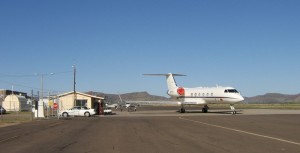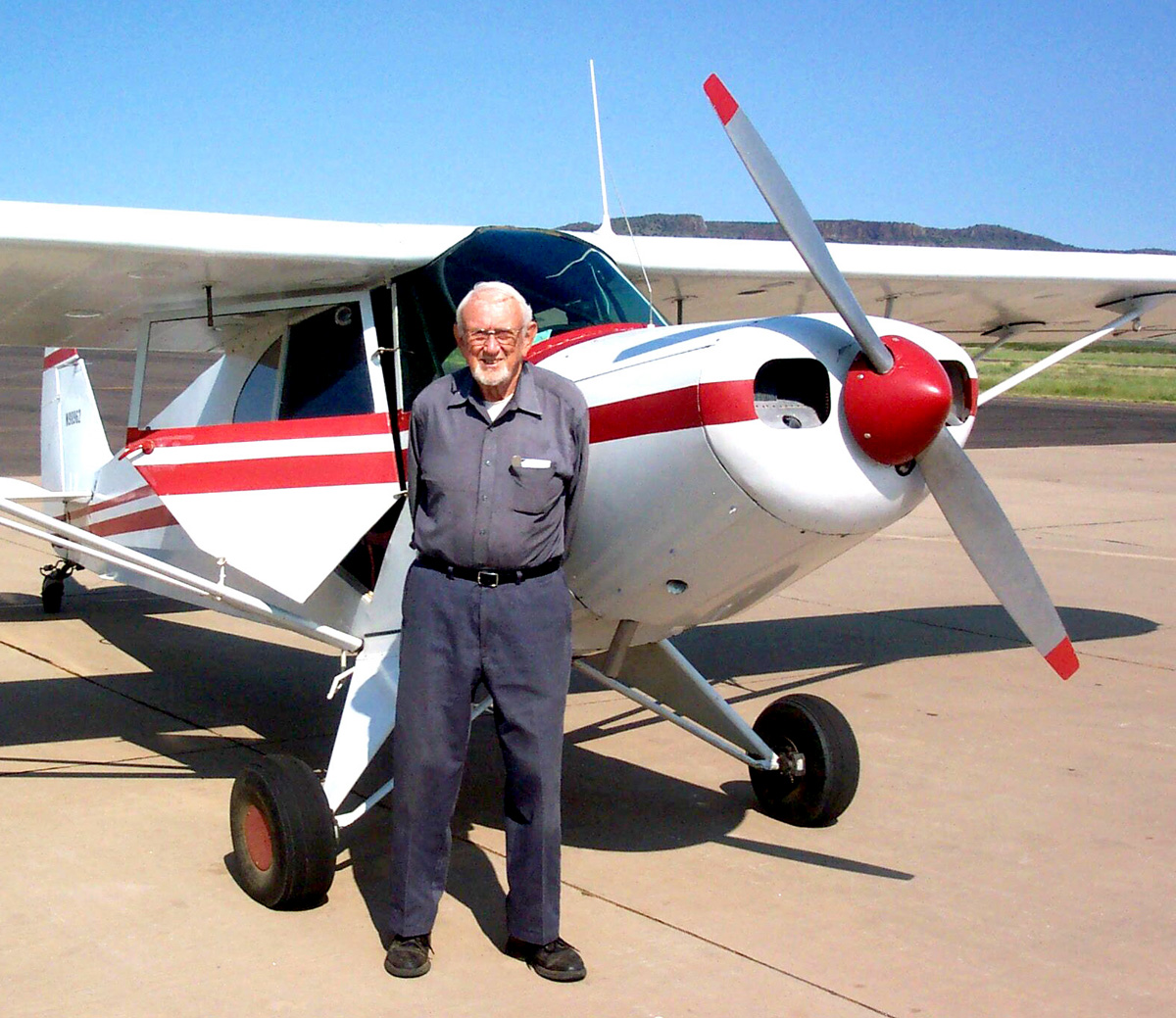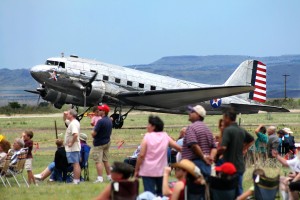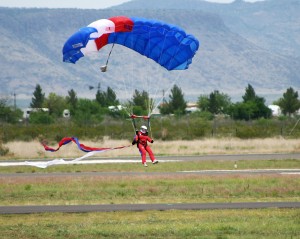By J Carpenter, reprinted by permission of the Texas Department of Transportation Aviation Division
Alpine, Texas is a mesmeric city nestled in the Davis Mountains, approximately 200 miles east of El Paso. Often called the “Hub of the Big Bend,” Alpine is a favorite stopover for tourists visiting nearby Big Bend National Park, the Davis Mountains and the University of Texas McDonald Observatory. The city supports three museums that primarily focus on geology of the Big Bend and lifestyles of the local ranching community.
Sul Ross State University has a stately campus situated on a hill overlooking Alpine. Named for former Texas governor, civil war hero and patriot Lawrence Sullivan Ross, it serves a 19-county area in far West Texas.
Due to the city’s remote location, Alpine-Casparis Municipal Airport (E38) plays an important role in supporting the local economy. The 2,100 general aviation visitors each year, along with the GA tenants at the airport, contribute more than $1.9 million in total economic output to the community. There are 22 full-time airport jobs with $727,000 in payroll.
Runways 1 and 19 are more than 6,000 feet long. Runway 19 has two instrument approaches: the new global positioning system approach and the older non-directional beacon approach. Locals claim that Alpine-Casparis Muni is one of the oldest, if not the oldest airport in Texas. It’s named in honor of local aviation pioneer John “Cas” Casparis, who died in 1984.
On a recent visit to Alpine, I sat outside the local E38 FBO office and became engrossed in the quiet and peaceful environment of the Chihuahuan Desert. The cool shade and crisp arid air offer an excellent venue to view the nearby mountains. As I was about to doze off, I heard the crackle of a speaker box connected to the local radio frequency. A pilot was broadcasting his intentions to land in Alpine.
A twin-engine Beechcraft Queen Air entered the pattern, landed and taxied up to the FBO. The props had barely stopped spinning when several UPS vehicles surrounded the aircraft. The delivery drivers began to portage many parcels from the airplane into their vans, scurrying like ants on hot cement. Then, as fast as the trucks had arrived, they sped off in several directions to make deliveries. Most drove into town, while one lone truck headed north into the mountains on the Ft. Davis highway. Then sounds of the desert returned: coos from an Inca dove and the drone of distant cicadas.
I had landed my Grumman Tiger at Alpine to refuel and meet an illustrious, local pilot. The airport lineman greeted me with typical, warm, West Texas hospitality. Though a stranger, local pilots treat any visitor as though they were some long-lost friend.
“Do you need a courtesy car?” asked the FBO attendant.
I replied, “I’m here to meet a gentleman who tracks animals in his . . .”
“Oh! Vose! You seek George Vose,” the young man said, before I could finish my sentence.
“That’s right,” I responded.

A new Gulfstream IV business jet is parked next to the small terminal building at Alpine-Casparis Municipal Airport.
I knew of Vose from viewing the “Imus in the Morning” TV show. For several weeks, Don Imus promoted a book entitled “On the Wing,” by Alan Tennant.
Tracking the migration of a peregrine falcon
By way of background, Vose is one of the main characters of this nonfiction book that spent many weeks on the New York Times Best Seller list. The story begins with Vose and Tennant helping the U.S. Army track the initial migratory flight of peregrine falcons along the Texas Gulf Coast.
Using “borrowed” Army radio tracking equipment and flying in a Cessna 172 piloted by Vose, this unlikely pair decide to launch their own adventure, tracking another peregrine falcon that Tennant had caught and tagged with an electronic transmitter. The men didn’t obtain an initial heading of the falcon while on the Gulf of Mexico and locate the bird weeks later, as the Army does. Instead, Tennant and Vose tracked the falcon in the Cessna all the way from Padre Island, Texas, up the front range of the Rocky Mountains, to the peregrine’s summer arctic home on Alaska’s North Slope.
Tennant, who has written many nature books (snakes are his specialty), had taken up the plight of the peregrine falcon because its survival was in danger due to the accumulation of pesticides in the bird’s tissue and bones. Tennant, however, wasn’t comfortable flying in small planes. Vose, on the other hand, was a veteran pilot with vast experience flying many types of aircraft, but knew little about migratory routes of birds.
Vose, now in his 80s, realized that his flying career couldn’t last indefinitely and was glad to have the opportunity to fly this precarious course, tracking an unseen falcon. Vose and Tennant, an odd couple indeed, became close comrades while encountering difficult times.
The book ends by chronicling another flight, this time from Texas to Belize, Central America, again tracking another falcon. Tennant, who lives in Marathon, Texas, narrates breathtaking views of North and Central America, while educating the reader about the peril the planet faces because of vast pollution. Rumor has it that “On the Wing” may be made into a movie by the National Geographic Society. Further speculation says Robert Redford might play the role of Vose. When asked who he thought should play his own character, Tennant was quoted as saying, “Brad Pitt.”
Along came George
Back at the Alpine FBO, a vintage Piper PA-12 Super Cruiser taxied to the self-serve gas pump. A young man named Cade Woodward emerged from the cockpit. He said he was a student pilot, learning to fly from Vose. As if on cue, in walked a tall, distinguished-looking gentleman with snow-white hair, moustache and goatee. It was Vose himself. He had driven up from his airstrip south of Alpine. After a brief introduction, he poured a cup of coffee and stirred in a spoonful of sugar.

Backed by the Davis Mountains, two Raytheon T-34 Air Force training aircraft fly over the 2007 Big Bend Air Show.
Rather than talking about his own colorful career or even Tennant’s book, Vose launched into a monologue promoting GA in Alpine. He pitched the idea of a new terminal building at the airport. He showed me an ad he had sponsored in the local Alpine Avalanche newspaper, which featured a photograph of a large Gulfstream IV business jet parked next to the present FBO, the small building dwarfed by the plane. A local pilot commented that it looked like a 21st century jet in some sort of time warp, parked next to a 19th century saloon from the TV series “Gunsmoke.”
“The terminal building is too little,” said Vose. “Twice this city has voted down a proposal for a new facility. We have a good airport; the runways are excellent, and we have a good AWOS (automated weather observation system), but a tiny building. We had a good plan, but the people voted it down, 2-1.”
Vose explained the city’s ads to promote the project stated, “It will cost each person only this much.”
“People don’t want to think about money leaving their wallets, even if it is only $5,” Vose said. “What they should have said is, ‘This new terminal building will help bring thousands of dollars to our city. People landing in these business jets have money to spend in our community. We need to have a nice building to greet them and a pleasant place to relax. The terminal building is the visitor’s first impression of our fair city. What we’ve got now is old and too small.'”
Vose, who started flying in Maine around 1939, has been instructing since 1943, logging more than 23,500 hours. He was awarded the Wright Brothers Master Pilot certificate from FAA Administrator Marion Blakey in 2005. One requirement for this award is 50 or more continuous years of commercial aviation.
“Cas”
I asked Vose if he ever met John Casparis.
“I knew ‘Cas,’ but not too well,” Vose recalled. “Nobody knew Cas real well, as he was a quiet and reserved man. I first met him when I landed here for gas. He was pretty aged at that time. My plane’s battery was dead, and I asked him if he could reach in and operate the magneto switch while I hand propped the engine. Cas replied, ‘I can hand prop it.’ There he was, an 80-year-old man, throwing the prop around like a kid. He got it started all right.”
Vose, now 86 years young, says he plans to continue supporting general aviation, teaching pilots and tracking animals.
“As long as I can continue to pass my medical exam, I’ll be flying,” he vows.
Big Bend Air Show
Steve Belardo, one of many local pilots who learned to fly from Vose, helped organize the first Big Bend Air Show, held May 25-26, 2007, at the Alpine airport. Belardo said the air show’s purpose was to promote general aviation by drawing the attention of the non-flying public to the value of the airport.
“Most ordinary citizens mistakenly think that the airport is just for rich folks with airplanes,” he explained. “We hoped to show that the airport supports a variety of services that benefit Alpine and the surrounding communities. Besides being a valuable stopover for cargo and tourists, Alpine-Casparis Municipal Airport is the launching point for emergency medical evacuations from the Big Bend Regional Medical Center to the Odessa Regional Hospital, 180 miles away. There are three or four medical evacuation flights a day, to and from these care facilities, which help save lives.”
Belardo added that the airport also serves as a staging point for government agencies, such as the U.S. Border Patrol, Drug Enforcement Agency and local law enforcement.
“A lot of ‘blue collar’ folks out there are interested, not only in art galleries or the historic ranch lifestyles, but they’re also looking for something else to do,” said Belardo. “I thought they would be interested in aviation-related activities.”
Apparently, Belardo was right; the inaugural Big Bend Air Show attracted more than 2,000 people. The show boasted vendors, a VIP pilot supper and static displays of various aircraft, such as a vintage Douglas C47, Mitchell B-25 bomber, aerobatic aircraft, skydivers and much more. Major sponsors included CBS Channel 7 from Midland/Odessa, the Alpine Chamber of Commerce, the Alpine City Council, the Big Bend Regional Medical Center and Rainbow Adobe Homebuilders, along with support from other local businesses and private citizens. The Texas Department of Public Safety set up a display booth, complete with a helicopter and six troopers, to answer visitor queries.
The air show benefited the Family Crisis Center of the Big Bend.
“I’m very happy to report that we were able to donate $5,000 to the Family Crisis Center and have a little ‘seed money’ left over for next year’s event,” said Belardo. “What’s more, people who knew nothing about the airport were able to come and see the facility first-hand and learn about the important role it plays in our community.”
Many believe that because of its remote location, Alpine and Alpine-Casparis Municipal Airport are sleepy spots on the map, where little happens. But, I found the city and its airport an active and friendly base for visiting the majestic and Big Bend area of Texas.
For more information about Alpine-Casparis Municipal Airport, visit [http://www.airnav.com/airport/E38].
















